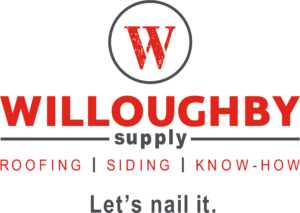When it comes to roofing, one of the most versatile options available is flat roofs. They’re cost-effective and aesthetically pleasing, making them popular for many roofing contractors and commercial building contractors. But beyond that, several different types of flat roof systems are available, each with unique benefits. Let’s explore the various flat roofing systems and their respective advantages.
Advantages of Flat Roofs
Flat roofs offer several advantages over sloped or pitched roofs. First of all, flat roofs are much easier to install than other roof types; it’s usually just a matter of laying down some waterproof material over the top of your structure. Additionally, they don’t require as many construction materials as sloped roofs—meaning you’ll save money in the long run by not purchasing additional supplies.
And, since they’re typically constructed with waterproof materials like rubber, they don’t need to be treated with sealants or other chemicals to be weatherproofed. Finally, flat roofs can be used as an outdoor living space or terrace because they provide an even surface that makes them comfortable and attractive for entertaining guests outdoors.
Types of Flat Roof Systems
There are several different types of flat roof systems available on the market today: Built-Up Roofs (BUR), Modified Bitumen Roofs (MBR), and Single-Ply Membranes (ethylene propylene diene monomer). Each roof type has its own set of pros and cons; however, all three systems will provide excellent protection from harsh weather conditions such as high winds or heavy rainfall.
Let’s take a closer look at each system in turn:
Built-Up Roofs
This type of system is made up of multiple layers of felt paper, which are then covered with tar or asphalt coatings in order to create an impermeable membrane on top of your structure. Built-Up Roof systems are highly durable and can last up to 20 years if properly maintained. They also offer superior fire resistance compared to other types of flat roof systems.
Modified Bitumen Roofs
These roofs are similar to Built-Up Roofs but instead use modified bitumen sheets instead of tar/asphalt coatings for added durability and flexibility. They can last up to 25 years if maintained correctly and provide excellent protection against extreme temperatures and UV rays from the sun. Modified Bitumen Roofs are also relatively easy to repair if damage does occur.
Single-Ply Membranes
This type of flat roof system uses ethylene propylene diene monomer (EPDM) sheets instead of traditional felt paper/tar/asphalt layers for added strength and flexibility without sacrificing breathability or drainage capabilities. Single-Ply Membranes can last up to 30 years if properly maintained – making them one of the most long-lasting options out there! Additionally, this system offers superior protection against hail storms since it is made up entirely of rubber sheets rather than traditional asphalt/felt paper materials.
Factors to Consider When Selecting a Flat Roof System
When helping a client select a roofing system, building contractors have higher stakes than ever. After all, the roof is one of the essential components of any home building project and one of the most significant investments a homeowner can make. But with so many different types of flat roof systems, how do you know which one is best for their needs?
Durability and Longevity
Regardless of the type of flat roof system you select, durability and longevity are crucial considerations. You want a system designed to withstand extreme weather conditions like high winds or heavy snowfall without sacrificing its structural integrity. Certain materials like EPDM or TPO rubber are excellent choices in this regard, as they are highly resistant to UV rays, hail, wind, and other extreme conditions.
Maintenance Requirements
Another factor to consider is the maintenance requirements of each type of flat roof system. Specific systems require more maintenance than others, so it’s essential to understand precisely what kind of upkeep will be necessary to keep your roof in top condition year-round. For example, some systems require frequent inspections, while others may only need occasional maintenance checks. Understanding these requirements ahead of time will help ensure that your client’s roof stays in good condition for years to come.
Weather Resistance
Weather resistance is also a key factor when selecting a flat roof system, as certain materials may be better suited for certain climates than others. For example, if your client lives in an area with frequent snowfall or high winds, you will want to choose a material specifically designed for these conditions, such as EPDM rubber or TPO rubber membranes. On the other hand, if they live in an area with milder weather, metal shingles may be an optimal choice due to their low-maintenance requirements and long lifespan.
Ease Of Installation
Lastly, ease of installation should also be considered when selecting a flat roof system. Some materials may require more specialized tools or expertise than others to install on a building’s rooftop properly. This could mean needing additional professional help during installation or purchasing special equipment that can handle heavier materials like metal shingles or rubber membranes. In any case, understanding these details ahead of time can save you and your client time (and money!) down the road.
Installation Tips for Long-Lasting Flat Roofs
As a roofing contractor, you understand the importance of installing a flat roof correctly. Without proper installation techniques, your clients will have a roof that won’t last until their next scheduled maintenance date. To help ensure that your clients have long-lasting satisfaction with their flat roofs, let’s explore some critical installation tips.
Preparing the Surface
The roof surface needs to be prepared correctly to get the maximum benefit from insulation and drainage materials. Ensure that any existing material on the roof’s surface is removed before laying down new materials. This will also help reduce any inconsistencies in the overall shape of the roof which can lead to water pooling in certain areas. Once you’ve removed any existing material, it’s time to install insulation and drainage sheets so that hot and cold air doesn’t escape or enter into the structure from below. Both these materials need to be placed securely and should fit together snugly for maximum effectiveness.
Sealing Joints and Seams
Once you have all your base layers in place, it’s time to start sealing up joints and seams so that water won’t leak through or cause damage if severe weather hits. Start by using an adhesive solution along joints and seams; this will provide a strong bond between base layers and create an additional seal against moisture entering through these spots. After letting everything dry overnight, apply a waterproof sealant over the adhesive solution for an extra layer of protection against leaks in extreme weather conditions.
Positioning Layers Properly
When positioning all your layers, ensure they are perfectly level, so there isn’t any warping when exposed to heat or cold temperatures later down the road. It might take some extra time but make sure each layer is secure and level will save you from having problems with sagging or bulging later on due to uneven weight distribution across the entire roof structure.
Upgrade Your Roofing Projects to the Next Level with Willoughby Supply
Willoughby Supply is the go-to source for building contractors in Ohio looking for top-quality materials. Our competitive prices, fast shipping, and commitment to customer service make us the premier choice for building material needs in Ohio. With Willoughby Supply, you can rest assured that your projects will be completed on time and within budget. So don’t delay – contact Willoughby Supply today for all your roofing needs in Ohio!



